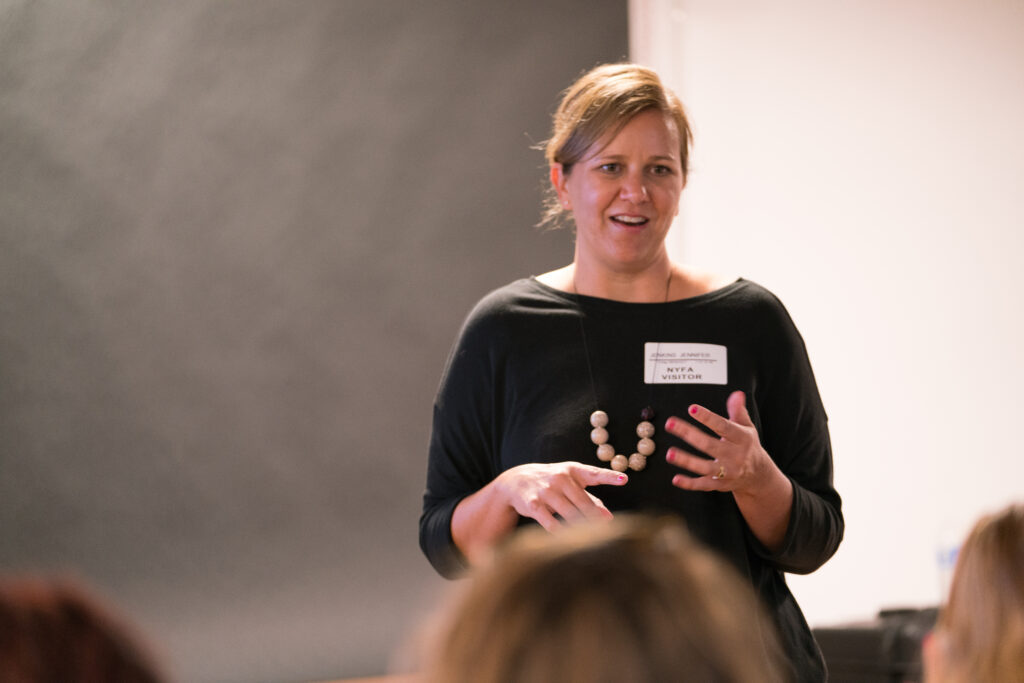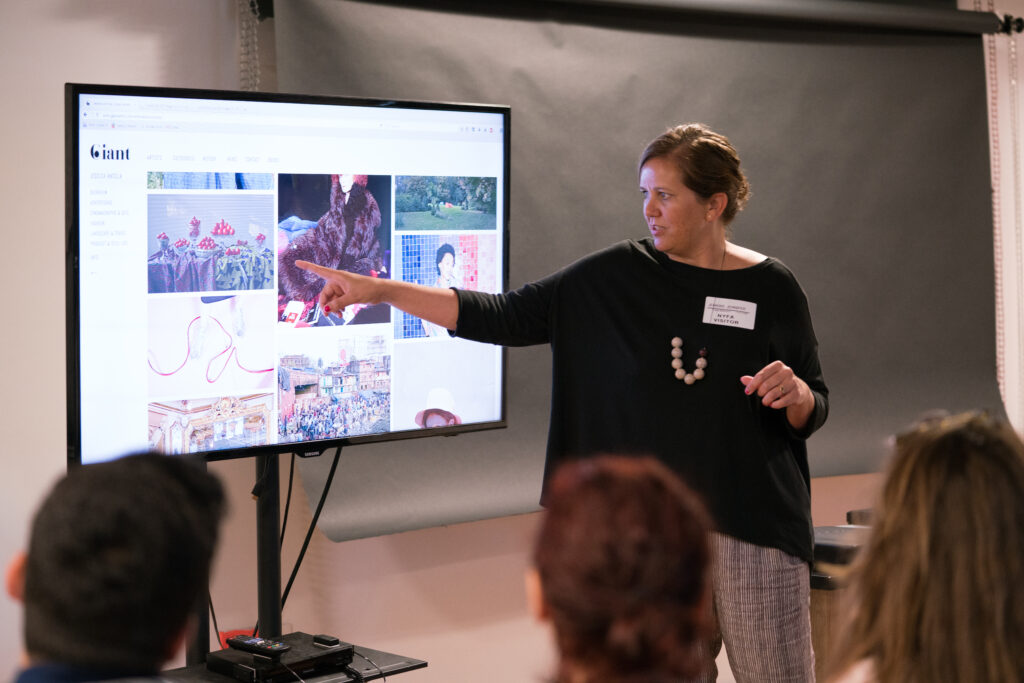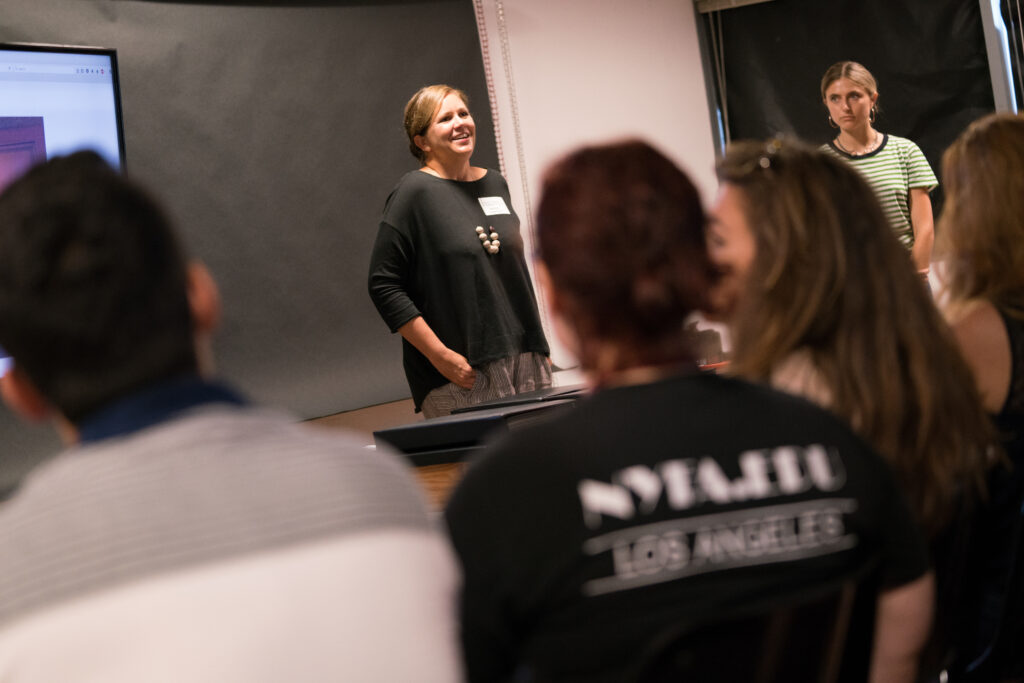Early this August, Jennifer Jenkins from Giant Artists gave the first of three lectures for the New York Film Academy Photography Department’s summer series. In attendance were students interested in learning more about professionalism within the industry.
Jenkins began her career in music working with bands like Wilco and Elliot Smith. She spent 11 years managing artists, but around 2005 the future of the music industry was called into question with the advent of streaming services and illegal downloads.
Jenkins began to look at other ways she could engage with and serve the music community. Her first love was the album cover, and soon she had created Giant and began working with photographers with a unique way of seeing the world.
Though album photography was her passion, Jenkins revealed that advertising is Giant’s bread and butter. She explained that current trends are against the grain, and clients are looking for something they haven’t seen before. This bodes well for Giant’s artists like Emily Shur, Christaan Felber, Jessica Antola, Tom Van Schelven, and RJ Shaughnessy.
Jenkins’ had plenty advice for students as they make their way into the working world. First, she suggested that every artist find his or her own voice. She calls this “Diversity with a single point of view.”
Many young photographers begin as a studio assistant. Jenkins commented that many of those assistants leave with work that looks just like their former bosses, but no one will buy a copy while the original is still available. Jenkins suggests working as an assistant for just a few years.
“Find your own team,” was another piece of advice that Jenkins emphasized to students. Photography is not a profession that can be done solo: Many clients are asking for motion graphics and GIFs. Having a trustworthy editor and graphics team will put beginners far ahead of the competition.
Another important to-do for aspiring photographers is to have a beautiful and completed portfolio. “Make sure all of your pages are printed from the same place.” Jenkins detailed the unpleasant experience of flipping through a talented artist book when every page looks different. Clean uniformity helps the keep the viewer’s eye where it should be — on the work. Jenkins suggested clean white paper in an 11×14 black book with a two-inch margin and no more than 70 prints. Jenkins cautioned against going the iPod route: The backlighting can be distracting and many clients like the look and feel of a book.
Once a portfolio book is complete, photographers will be ready to start submitting their work. Jenkins attends a number of photography competitions throughout the year. Artists were encouraged to apply to and attend these competitions. She also suggested using an industry database like Agency Access to book jobs.
The New York Film Academy would like to thank Jenkins for taking the time to speak with our students. You can learn more about Giant Artists by clicking here.


